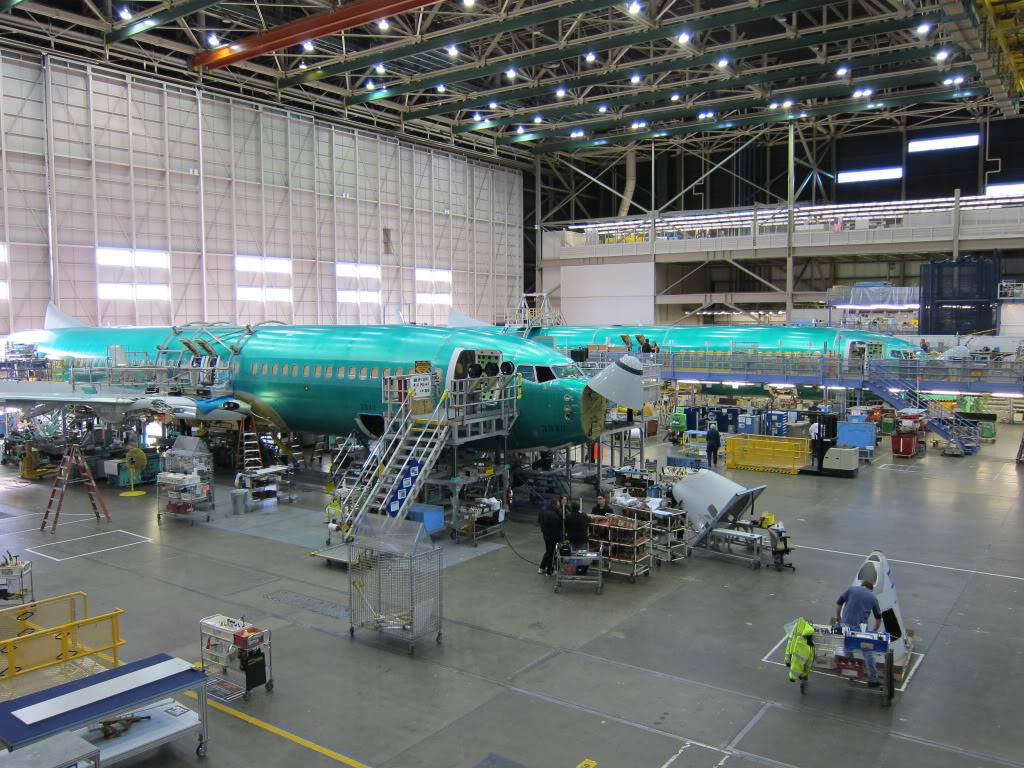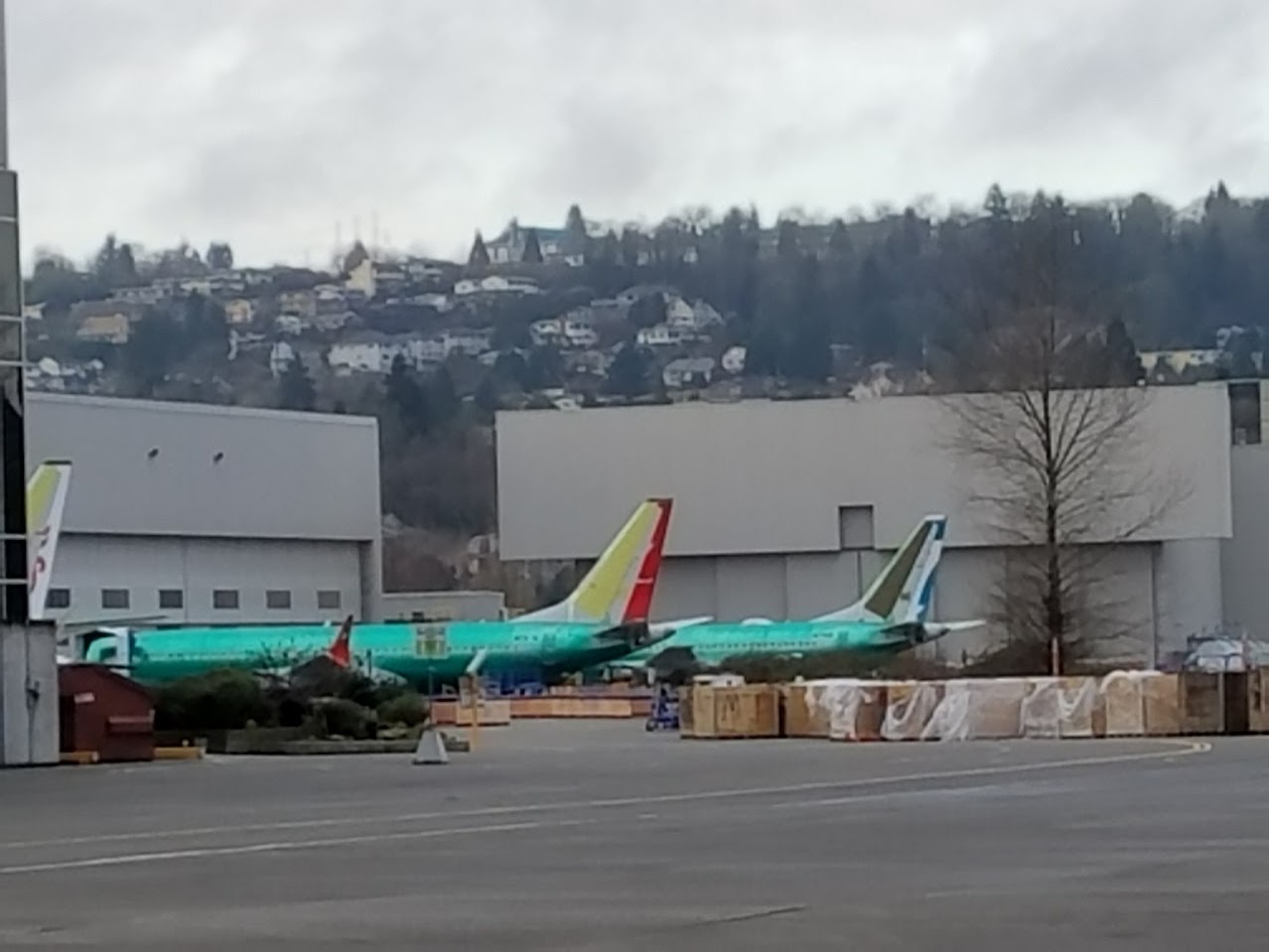Boeing is in early stages planning for a new narrowbody plane to replace the 737 MAX. CEO Kelly Ortberg reportedly met with Rolls-Royce officials in the UK to discuss designing a new engine for the aircraft. They’re also said to have begun preliminary design work on the plane’s flight deck.

A new senior product executive within Boeing’s commercial aircraft arm has been appointed, likely to oversee design direction, with an aim towards 20% greater efficiency than current single aisle jets.
Boeing is currently working to restore production credibility and deliver its backlog of 6,000 jets. They have yet to successfully certify the 737 MAX 7 or 10, and their widebody 777X project faces incessant delays as well.
Still, there’s progress as the FAA is set to partially restore their ability to self-certify the airworthiness of some 737 MAX and 787 aircraft for delivery. Following the cabin panel blowout on an Alaska Airlines plane in January 2024, Boeing has had a production cap of 38 MAX jets per month. Issues at its Renton facility pushed production down to 31 MAXs monthly.

We don’t yet know whether Boeing aims this new aircraft to compete broadly with Airbus A320neo/XLR, or occupy a different niche such as lower capacity or short haul.
If we take this reporting at face value, the picture is: Boeing is quietly repositioning toward a future successor to the 737 MAX, engaging with Rolls-Royce for propulsion leadership, doing early cockpit design work, reorganizing internally, while publicly prioritizing recovery and backlog clearance. But everything is at the “pre-option, conceptual” stage.
Assuming a new aircraft, Boeing surely learned that they stretched the 737 too far witht he MAX. A credible competitor for the futre demands new geometry — perhaps a wider cabin cross-section, taller landing gear, and higher bypass ratio engines.

They should prioritize cockpit modernity, avoiding the MAX trap of grandfathering an old type certificate just to spare training costs. And they should focus on maintainability, building in predictive maintenance systems and easy access panels from day one.
Airbus currently owns the 200-240 seat, 4,000 nautical mile segment. Boeing has nothing competitive. It seems most likely they’d aim for this segment but with two fuselage sizes:
- A ~170-seat version to replace 737-8/9
- A ~220-240 seat version to compete with the A321
With the huge backlog in order books, the binding constraint has been production but airline demand is currently strong and there’s potential especially with the large U.S. carriers to get an early order for mid-2030s fleet renewal.

However, Boeing needs to fix its culture before actually building a new airplane. The FAA and airlines won’t tolerate shortcuts. Boeing has to demonstrate structural reform in quality, engineering authority, and certification transparency. They need to bring regulators into the design loop well before rollout to avoid multi-year certification delays. And they need to line everything up before public launch – no faking readiness like they did with the 787.
And there needs to be a clear future-oriented vision, not merely a reaction to Airbus and ‘me too’ product. But it still needs financial discipline, and hard supplier commitments backed by real dollars.
It’ll perhaps take a couple of years to firm the concept and firm an engine partner and socialize the concept with airlines.
Then they’re looking at program launch and firming of design; signing supplier contracts; building a new assembly line; and building mockups and demonstrators.
Prototypes and testing won’t happen until 2030-2033 at the earliest. That will be followed by 2–3 years of test flying. And it means we likely don’t see first deliveries until 2035 – 10 years into the future.


It’s insane how behind they’ve let themselves get for this part of the market
Was just reading that article on this in the WSJ. Wish Boeing had kept the 757 line running, because that would’ve been a better airframe for newer, larger, more efficient engines that they instead tried to strap onto the 737, resulting in the MCAS debacle (on hundreds of deaths….) So, we doin’ a 797, finally?
It’s about time, if true.
As per 1990’s comment..
Boeing should have kept the 757 line. New engines etc on the 757 and Boeing would once more have a competitor to the Airbus 321 family…
Laughable to suggest Boeing didn’t “bring regulators into the design loop” early in the past. Going back decades, the FAA will come into any new program with clenched fists, demanding more testing, extracting more something to alter longstanding design practices to show who is in control.
1990
the 757 had a massive wing and huge engines for a narrowbody which it gave it great performance (no MAX or A320NEO will beat it) – but that is unnecessary and adds operational cost for the vast majority of missions. The majority of incremental weight of an aircraft comes w/ the wing.
Boeing does not appear to be looking at something that can also be a replacement for the 767 -a small widebody.
I suspect that Boeing will go with a new, wider narrowbody fuselage that can support larger engines and transatlantic range but still have good economics even for domestic ops. It might need two wing options to not be too heavy for shorter, smaller flights and a larger wing for longer, larger fuselages
and remember that Airbus is likely to launch the A220-500 which will hit at the heart of the MAX family and also obsolete the A320NEO, leaving Airbus’ with the A321NEO – which has sold more than the entire MAX family. Airbus might enhance the wing on the A321NEO to support a stretch.
The chances are this next narrowbody and Airbus’ response (or vice versa) will be evolutionary, rather than revolutionary.
And a certain airline that has about 500 narrowbodies on order might find that they are getting the last 200 copies of their current order book just as a new generation narrowbody is rolling into the fleets of its competitors.
Has Boeing earned the privilege to be able to “self certify”? That one line makes me pretty nervous.
I’d rather employ Airbus to certify Boeing equipment and visa versa. Pay them for every valid issue they identify.
@Tim Dunn — The a220 is indeed a beautiful and versatile aircraft (good range, big beautiful windows, passenger-friendly 2-3 configuration in Economy, and more). Delta made an excellent decision to go with it to replace aging 717 and a319s from NWA; otherwise, they could have gone with Embraer E2 (an impressive 2,000-3,000 nautical miles depending on variant for such a small aircraft; Porter has been flying them from YYZ-LAX, for instance). So, time to ditch the CRJs. Funny how American and United didn’t seriously consider the a220 (their loss.)
757 had a large wing, and it was not just a matter of ‘strapping the MAX engines’ onto it. It would not have had the efficiency needed to compete, or shrink. The MAX engines did not have more thrust – they had more efficiency which you only get with a larger fan and higher bypass ratio (as technology allows you to run the core harder). There was nothing new in the 35-40k engines class 20 years ago when the 757 was sunset, and nobody was buying it. 737 operators were adamant that the next gen 737 have common type, minimal transition training. It can be hard to overcome an installed base numbering 10,000.
TD: “a certain airline that has about 500 narrowbodies on order might find that they are getting the last 200 copies of their current order book just as a new generation narrowbody is rolling into the fleets of its competitors.”
‘A certain airline’ (UA) has 225 MAX orders/deliveries post-2026 of which 167 are MAX 10s. Who knows if the MAX 10 ever happens, but the launch customer (DL) has 100/30 orders/options for the MAX 10s.
UA has 212 A321NEO/XLR orders.
DL became the launch customer for the MAX 10 because UA couldn’t wait for the model so converted their orders for other models, something DL could do.
You also realize that DL’s 737-900ER order came from converting the former NW 787 order?
Boeing and Airbus convert models all the time.
The point that you miss in defending UA is that overordering in one decade means you have too few next generation aircraft in the following decade.
AA did that in the decade of the 2010s, has a young fleet but a lower percentage of new generation models than DL or UA, and UA is doing it in the 2020s and will face the same problem in the 2030s.
and DL already has the A220 which gets fuel economy per seat as good as larger aircraft and they will very likely order the A220-500 when Airbus rolls it out.
As hard as it is for you to admit, UA’s massive fleet replacement strategy not only will cause it to lose out on new generation aircraft in the next decade but they will not get some models like the 35K that will be simply game-changing for the US airline industry and which DL will enjoy for years even if UA orders the A350 today.
How many of the 6000 order MAX backlog will convert to the new plane if Boeing comes out with it before the backlog is burned off?
If they continue MAX production and the new plane, they will need a new production line somewhere. State of Washington will probably throw money at Boeing to ensure the production line is in the PNW.
Absolute must: 10-12in wider cabin, so seat width is 1-1.5in better (at or better than A320 family) and an extra inch in the aisle to speed boarding and deplaning. Also will reduce bumps from galley carts.
55:1 seat to lavatory ratio cap would be great too.
TD: “overordering in one decade means you have too few next generation aircraft in the following decade.”
Depends on your assumption regarding the size of the airline. What is pretty obvious that you don’t understand the game that is being played right now with only three airlines making $ in the U.S.
In the old days, aerospace giants used to “bet the company” on each major project. Sometimes they ended up with world beater (747 is the famous example of this story arc), sometimes they didn’t quite hit the mark and it was the end of the line (L-1011), sometimes things got complicated (RB211).
The MAX debacle will be a case study in ethics in business schools and engineering schools for a long time to come, a case study in what not to do (lol). The 787 program hasn’t exactly been a shining case study of how to take a successful company and make it even more successful (cough cough). Let’s hope for Boeing’s sake that the new narrowbody will be a positive case study instead of a negative one.
@JimC2 — Well said.
Rolls Royce (and Lockheed) nearly went bankrupt because of the RB211, but it paid off in the end. Simple Flying had a great post on it recently.
https://simpleflying.com/rolls-royce-rb211-original-record-breaking-engine/
Can Boeing just steal the C919 designs from China and turn the tables for once?
Boeing needs a new Board of Directors after the series of catastrophes that have ensued since McDonnell Douglas took over. Since the new management came in I have very little trust in Boeing and am shocked that the FAA is allowing them to go back to certifying themselves. I badly want Boeing to go back to being a company that we can trust but they’ve done nothing to make that happen in the past decade.
JL
I know exactly what “game” Scott Kirby is trying to play which is to kill off every airline not named Delta and then grab all of the airplanes he can to expand UA to a multi-thousand aircraft fleet.
Problem is that Delta is not playing – which is why DL has consistently matched UA’s domestic growth and has decided it needs to start starting new DL routes on top of UA – which is where LAX-HKG and -ORD came from and most recently JFK-OPO
Delta figured out over the past 100 years to compete and win against everyone else that comes along but do so w/o needing to trash talk its competitors, something Kirby does ALL. THE. TIME.
and, remember, UA said it would have a fleet of about 1350 aircraft by now – Gary had the UA fleet plan on here. That didn’t happen.
And UA has the oldest fleet among US airlines and one of the oldest among large global airlines worldwide.
UA has no choice but to start retiring LOTS of aircraft or watch its maintenance costs go sky high – if some airplanes even support longer passenger lives.
so, no, UA’s massive growth won’t happen as you have been led to believe. The feds are on UA since Kirby tells the world his plan to eliminate the competition every week.
UA will have to engage in significantly fleet replacement.
JimC2,
it is worth noting that some airlines including DL and UA are generating higher profit margins than Airbus and Boeing. That might have something to do with why they aren’t willing to spend the money on multi-billion dollar new projects
@1990:
While we are supposing, I am thinking the blended wing.
@Denver Refugee — Oof. No thanks. There’s a reason few Western carriers want those aircraft.
In TD’s world past, performance guarantees future results. Bless your little heart.
no, JL, every company wins its right to exist every day.
It just doesn’t have the right to determine that “it” has arrived and no one else has a future or that it is its job to eliminate the weakest players.
TD: “It just doesn’t have the right to determine that “it” has arrived and no one else has a future or that it is its job to eliminate the weakest players.”
Do you just make this stuff up? You have quite adept at building straw man arguments. Bless your heart.
straw man arguments?
Look up the string, puppet, and see your master.
Scott Kirby tells the world EVERY WEEK AT LEAST that American and the entire low cost and ultra low cost carrier segment of the US airline industry is failing and that UA is throwing capacity into the market to hasten their demise.
It would be funny if it weren’t real that a person running a Fortune 500 company actually has no clue how to keep his thoughts and strategies to himself.
None of which changes that UA’s massive fleet replacement now means they will have little ability to take on many of Boeing’s newest wondertoys in the 2030s.
The 757 nostalgia is understandable, but the reality is that program was boxed in once 40k-class engines disappeared. Even a refreshed 757 would have trailed the A321 badly on economics, which is why Airbus ended up owning that space with the LR and XLR. The real hinge for Boeing isn’t whether to “bring back” a design, it’s when the right propulsion arrives. UltraFan and RISE promise around 20 percent fuel-burn gains, but those aren’t in service until the mid-2030s. Go earlier and you’re basically hanging a new wing and systems on an evolved LEAP or GTF, which limits the step change.
That’s why the production system may matter more than the airframe itself. Stabilizing fuselage supply, integrating Spirit, and proving repeatable quality are what will determine if a new program can succeed. Then Boeing can introduce a clean-sheet narrowbody with a slightly wider cabin for true 18.5-inch seating, taller gear for bigger fans, and two wing options: one domestic and one long range. With the FAA keeping much closer oversight than in the 787 or early MAX days, the bar is higher, but also clearer. Airbus isn’t rushing either, so the real race is much more about execution and credibility this time around.
At this point it’s questionable whether Boeing actually has the ability to design and build a new generation aircraft. Every development project since the first 777 update has been far over time and budget, and the last clean sheet design 20 years ago, the 787, was a technical, schedule, and financial disaster which will never break even. Boeing used to be a great company, but it’s been on a downhill trajectory for over 20 years.
TD is confused as usual. Speaking the truth isn’t what caused the problem and maybe you aren’t aware it is called the airline business for a reason. Methinks someone is sympathetic for a reason.
TD: “None of which changes that UA’s massive fleet replacement now means they will have little ability to take on many of Boeing’s newest wondertoys in the 2030s.”
That’s hilarious. Who knew what a Boeing cheerleader you are? Do you think Delta will get jealous?
It is beyond laughable that you now seem to think that UA hasn’t been orchestrating and rooting for 2/3 of the US airline industry – and then telling anyone that listens how smart UA and its leadership is that they know who is weak.
Yes, UA’s massive fleet replacement now means they will be in less of a position to buy new generation aircraft when they do come.
Well-run airlines (read Delta) understand that incrementally replacing about 5% of their fleet per year plus allowing for some growth will create a stronger balance sheet and the opportunity to participate in new aircraft programs while taking advantage of end of production line discounts such as DL got on the 321CEOs and 739ERs.
AA waited too long to replace its M80 fleet, has too many last generation aircraft but has a younger fleet and will be ripe for a new generation aircraft in the mid 2030s and UA is overordering this decade
and UA will never have a 2000 aircraft mainline fleet which is what taking delivery of 100 new aircraft/year would imply for a 5% replacement rate.
but UA has never been a well-run airline so I really shouldn’t be judging them by that standard.
TD; “UA will never have a 2000 aircraft mainline fleet which is what taking delivery of 100 new aircraft/year would imply for a 5% replacement rate”
Poor Tim.
UA Fleet Size
2016/737
2017/744
2018/770
2019/777
2020/812
2021/826
2022/868
2023/945
2024/994
2025/1,049
thank you for making my point.
Now, go back to UA’s presentations including the internal document that showed UA’s fleet plan coming out of covid, and they expected to have 300 more aircraft than they have now.
as of UA’s 2024 10K (annual report), they contracted to receive 118 mainline aircraft in 2026 but expect to receive only 94, with shortfalls in every model they have on order but the worst delays still being w/ Boeing aircraft.
94 new aircraft on top of 1049 this year is a 9% rate for new aircraft – far in excess of the normal 5% replacement rate.
If you just review all your talking/data points I am hopeful even you can figure out what is happening. Long story short since 2016 UA has been improving, becoming more profitable while paying down debt and growing towards its network’s natural market share. This process will continue thanks to its current leadership, timely aircraft orders, airport infrastructure enhancements, United Next and a myriad of ongoing product improvements. The trend is clearly UA’s friend. It’s just a matter of time.
nobody is doubting UA is improving and the current management team is correcting the mismanagement that saddled UA for years.
None of that changes that UA has been trying for years to take delivery of new aircraft far above the 5% normal replacement rate for 20 year assets (in reality, airlines now keep airplanes for longer than 20 years).
UA has wanted to grow its international network but esp. correct its lack of investment in its domestic network.
at the same time, UA execs talk incessantly about killing off weaker airlines which include most of the industry including AA, WN and the rest of the LCC/ULCC sector.
UA’s massive fleet replacement this decade will leave them with less of an opportunity to buy new generation aircraft in the mid 2030s – if Boeing delivers a new aircraft
TD: “UA’s massive fleet replacement this decade will leave them with less of an opportunity to buy new generation aircraft in the mid 2030s – if Boeing delivers a new aircraft.”
Completely wrong because it’s not just if, but when, and you are making erroneous assumptions about the size of the fleet and how long the aircraft will be in service despite you often pointing out many of the pertinent variables. Bless your heart for trying?
I don’t need to make assumptions. All I have to do is use real data including what UA has provided as well as UA’s statements.
Aircraft life limits are fixed by the manufacturer and there is more than ample public data to know where aircraft in each US airlines’ fleets are in that process.
UA has no choice but to do a lot of fleet replacement.
and the growth it thinks it will do at the expense of other carriers will simply depress UA’s own financial performance. Replacing LCC and ULCC capacity with legacy carrier capacity that has to be sold at discount fares – as UA said it is doing – is not a solution for viability.
you are free to argue until the cows come home and I am sure you will
I am simply interested in looking at actual performance.
Based on what is known and recorded is that UA is underperforming DL including financially which is not only much more conservative with growth but still pushes planes out the door at a pretty regular cadence
and UA is simply not growing at the rate it said it would and will not be able to do because its fleet has aged several years since it announced its fleet plans and a whole lot of UA aircraft are near their life limits.
TD: “I don’t need to make assumptions. All I have to do is use real data…Aircraft life limits are fixed by the manufacturer”
Cool. What are the fixed manufacturer time limits for the following aircraft?
A319/320/321 CEOs:
A320/321 NEOs
A330-200/300/900s
A350-900/1000
B737 NGs
B737 MAXs
B757
B767-300ERs
B777-200ERs
B777-300ERs
B787-8/9/10
I wouldn’t expect this plane until closer to 2050, and by that time COMAC will be out with a product based upon more current technology – because they have the manufacturing skill to bring a plane from the drafting board to market much faster – that the 797 which will be based upon ~2026 technology, and won’t be able to compete with. Unless Boeing can improve markedly, it has no room in the marketplace for commercial jets.
Apparently, someone who regularly posts here believes that Delta is the world’s only PERFECT Airline. He constantly compares it to every other airline, and brings it into the thread even if what he points out is a non-sequitur – as is this comment LOL!
To the topic, Boeing has to develop a replacement for the 737 at some point. And there is rarely a perfect time to do this kind of thing. My guess is that it will be bigger than the current model, since new aircraft designs rarely get smaller, and will probably also try to fill the so-called middle of the market – which may or may not exist. I may be wrong, but it seems to me that 550 is a rather paltry number of orders for the A321XLR if the middle of the market is as big as some claim.